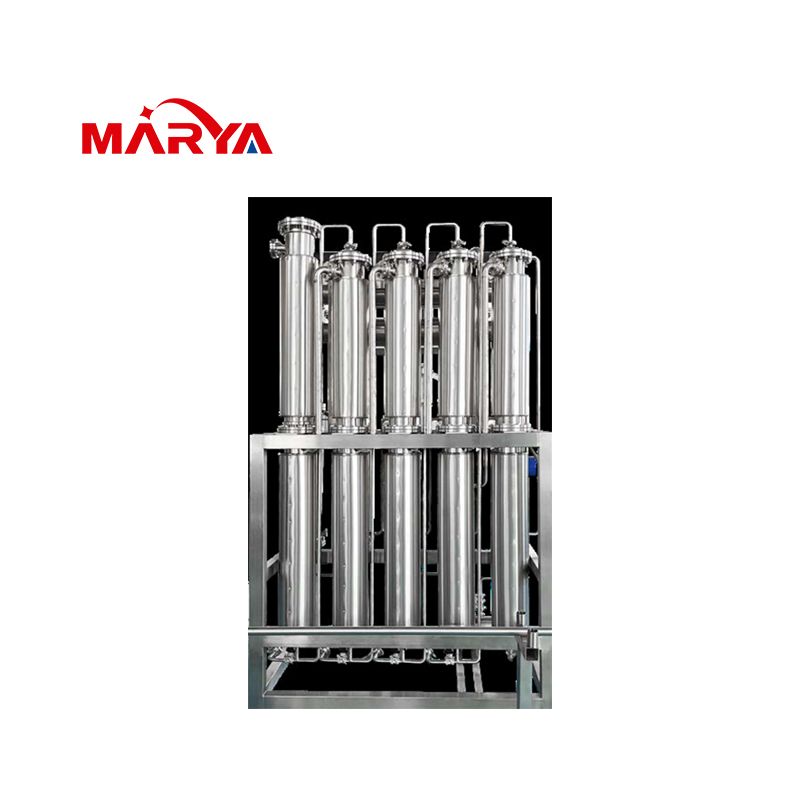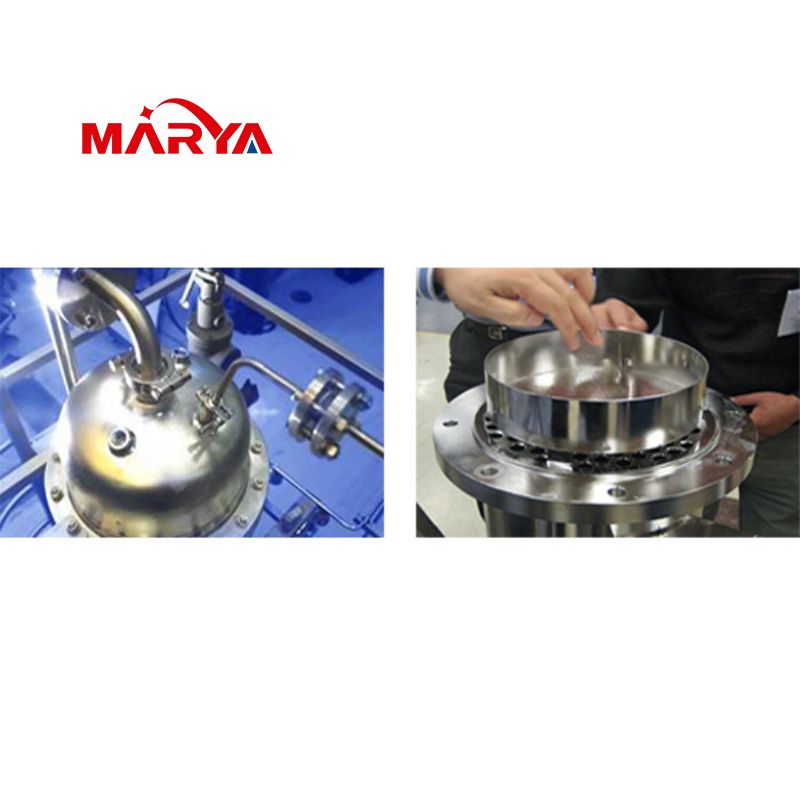Views: 0 Author: Site Editor Publish Time: 2025-07-01 Origin: Site






Vial filling lines play a critical role in industries like pharmaceuticals, biotechnology, cosmetics, and food and beverage packaging. These systems ensure that liquids, serums, or powders are accurately dispensed into vials for consumer or clinical use. As manufacturing processes become more sophisticated, there is a growing need to optimize these filling lines to reduce costs while maintaining high-quality standards. This article explores various cost-effective vial filling line strategies that can help manufacturers improve their bottom line without compromising on production quality or safety.
The vial filling process involves several key steps, including sterilization, filling, and capping. It begins with preparing the vials to ensure they are sterile and free from contaminants. Next, the vial filling line introduces the product into the vial, usually using automated machines that ensure precise amounts are dispensed. After the filling process, capping is performed to secure the contents and ensure safety and shelf-life. These steps must be carried out with precision to avoid overfilling, underfilling, or contamination.
Pharmaceutical Industry: Vial filling lines are essential for packaging medications, vaccines, and other liquid-based treatments. Accuracy is critical in this industry, as the correct dosage must be administered in every vial.
Biotech and Clinical Trials: Biotech firms rely on vial filling systems to prepare drug trials or small-batch productions. Consistency and cost control are key for these often high-value products.
Cosmetics and Personal Care: Cosmetics brands use vial filling lines for serum, oils, and other liquid-based personal care products. Efficiency and speed are vital to meeting consumer demand.
Food and Beverage Packaging: Some food and beverage products, such as flavored syrups and oils, also require vial filling. In this industry, cost-effective systems can help businesses scale production while maintaining competitive pricing.
Vial filling lines are not just about meeting regulatory standards and maintaining quality—they also significantly impact production costs. By choosing the right system and optimizing it for speed, accuracy, and efficiency, companies can reduce waste, minimize labor costs, and avoid costly delays. A cost-efficient vial filling line can help increase throughput while maintaining quality standards, leading to better margins.
The upfront costs for installing a vial filling line can vary widely based on the type of machinery and its features. Automatic systems are typically more expensive than semi-automatic or manual machines, but they can pay off quickly through higher throughput and reduced labor costs. It's also important to consider the long-term return on investment (ROI) when selecting equipment. Some machines may have a higher initial cost but deliver greater efficiency and savings over time due to their durability and advanced features.
Automatic vs. Semi-Automatic Systems: While fully automated lines offer the highest throughput, they require a larger initial investment. Semi-automatic systems may be suitable for smaller operations, but they require more labor input.
Material Selection: Using high-quality materials for the filling process can also affect upfront costs. However, cheaper alternatives might compromise the reliability or lifespan of the equipment.

Labor is one of the most significant ongoing expenses in vial filling operations. Automating the process can reduce the need for manual labor, resulting in substantial savings in the long run. Automation can also eliminate human error, which can lead to costly mistakes in production.
Automation Reduces Labor Dependency: Automated vial filling systems require minimal human intervention, which reduces the risk of human error and improves operational efficiency.
Labor Efficiency: Automation enables operators to focus on machine maintenance and system monitoring rather than repetitive tasks, boosting overall productivity.
Over time, any vial filling system will require maintenance to keep it running smoothly. Maintenance costs can include the replacement of parts, cleaning, and general upkeep of the machinery. Predictive maintenance strategies can reduce the likelihood of unexpected breakdowns, saving on costly repairs and downtime.
Routine vs. Reactive Maintenance: Proactive, scheduled maintenance is generally more cost-effective than waiting for machinery to fail. Regular maintenance extends the equipment’s lifespan and reduces the likelihood of large, unexpected repair bills.
Material costs are another critical component of the overall expense structure. The goal should be to minimize waste during thevial filling process. This can be done by ensuring that the machinery is correctly calibrated, using accurate dosing mechanisms, and designing the production process to avoid unnecessary waste.
Waste Reduction: Implementing systems that control overfilling and underfilling can significantly reduce product waste. Advanced filling technologies ensure precise measurements, contributing to better material usage and fewer errors.
When choosing equipment, it's essential to prioritize energy-efficient and high-speed machines. High-efficiency systems reduce energy consumption and operating costs, making them an excellent long-term investment.
Energy-Efficient Technologies: Many modern vial filling machines are designed to consume less power while maintaining high performance. These machines help reduce energy costs and improve the sustainability of operations.
Speed and Precision: Machines that offer better speed and precision not only reduce operating costs but also improve throughput, resulting in more products produced with fewer resources.
Modular systems allow manufacturers to expand their production lines incrementally, adding more capacity as demand grows. This scalability helps companies avoid the risk of overinvesting in equipment that may not be needed immediately. It also allows for more flexible production schedules.
Scalability: As production needs change, manufacturers can easily add new components or machines to increase output without the need for a complete system overhaul.
Automation offers significant opportunities for optimizing the vial filling process. Robots and automated systems can increase throughput and reduce labor costs, while sophisticated software can control the precise filling of each vial.
Precision in Filling: Automation minimizes human error, ensuring that every vial is filled with the correct amount of product. This consistency reduces the need for rework or wasted product.
Inventory Management: Software integration helps manage raw materials and inventory efficiently, providing real-time data on the production process and helping manufacturers adjust production rates when necessary.
Investing in predictive maintenance tools can drastically reduce downtime, saving both time and money. By using sensors and data analytics, manufacturers can predict when a piece of equipment is likely to fail and take action before it impacts production.
Proactive Monitoring: IoT-enabled machines provide real-time data that can be analyzed to detect early signs of wear and tear, allowing for timely intervention.

Accurate filling is essential for minimizing material waste. Overfilling or underfilling not only wastes valuable materials but can also affect product quality. Advanced filling systems help ensure that each vial receives the correct amount of product.
Advanced Filling Machines: Some modern machines feature weight-based or volume-based filling systems that adjust in real-time to ensure perfect fill levels.
Choosing sustainable materials, both for the vials and the product, can contribute to cost savings. Sustainable packaging options may sometimes cost more upfront, but they can reduce waste and align with environmental initiatives.
Eco-Friendly Packaging: For companies focusing on reducing their environmental impact, using biodegradable or recyclable materials can be an attractive option. Additionally, reducing the size of packaging or choosing more efficient packaging designs can reduce both costs and waste.
Spills and contamination during the filling process are significant sources of waste. Ensuring that filling lines are equipped with spill-prevention technologies and contamination control measures helps save resources and maintain product integrity.
Spill-Prevention Systems: Automated systems that prevent spills by accurately positioning vials and using sensors to detect overflows can dramatically reduce losses during the filling process.
The rising cost of energy makes it crucial for manufacturers to choose energy-efficient vial filling machines. These systems consume less power, reducing operational costs and contributing to a more sustainable production process.
Lower Energy Consumption: Machines that use variable-speed motors or energy-saving technologies help reduce overall energy consumption, leading to lower utility bills.
Many manufacturers are implementing energy-saving technologies such as variable speed drives, which adjust motor speed based on demand, or energy recovery systems, which recycle excess energy.
Variable Speed Drives and Motors: These technologies help match the energy consumption with the actual production demand, leading to energy savings.
Incorporating sustainability into production processes can have long-term cost benefits. Reducing energy consumption, managing waste effectively, and sourcing eco-friendly materials help align with both environmental goals and cost-saving strategies.
AI and machine learning are revolutionizing vial filling lines by enabling systems to optimize themselves in real-time. These smart systems can detect errors and make adjustments without human intervention, improving speed and accuracy while reducing waste.
Robots are becoming more integrated into vial filling lines, improving the precision and speed of filling. IoT technology enables real-time data tracking, allowing for better decision-making and more efficient production processes.
The shift toward sustainable manufacturing practices is becoming more prominent, with an emphasis on reducing energy consumption, minimizing waste, and using eco-friendly materials. Companies that adopt these practices are likely to see long-term cost savings while meeting environmental and consumer expectations.
By focusing on automation, waste reduction, energy efficiency, and the use of scalable systems, manufacturers can significantly reduce their vial filling line costs. These strategies lead to increased profitability, improved product quality, and better resource management.
Investing in cost-effective vial filling line strategies may require significant upfront costs, but the long-term benefits include higher production capacity, lower operational costs, and improved sustainability. These improvements not only help businesses save money but also ensure they stay competitive in an increasingly demanding market.
A: A vial filling line is a production system used to fill vials with liquids or powders accurately.
A: Vial filling lines ensure precise dosing, sterility, and consistency, which are critical for pharmaceutical products.
A: Automation in vial filling lines reduces the need for manual labor, improving efficiency and lowering labor costs.
A: Key cost factors include equipment purchase, labor, maintenance, and material waste management.
A: By optimizing filling accuracy and using advanced machinery that prevents overfilling or underfilling.
